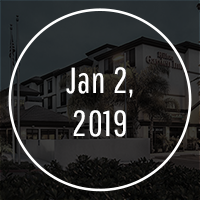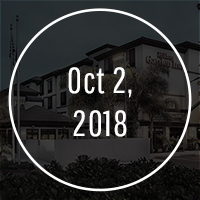Hotel Capital Stack in 2018: Laying Out Your Plan
U.S. hospitality markets are now in a period of strong recovery that goes back 96 straight months, according to STR. Banks will loan money because the economy is on solid footing, with low unemployment and strong consumer confidence. The toughest element of the low unemployment is the likelihood of continued wage increases and the impact that could have on net profits. Coupled with the customer acquisition cost increases identified by Kalibri Labs and the competition from non-traditional lodging accommodations, it is remarkable how resilient our industry has become.
Today, hoteliers might have the option of looking at several funding sources, including mezzanine finance or “key” money, though there are restrictions on additional loans with Commercial Mortgage Backed Securities (CMBS loans). Hotels are an operating business which means that one has to sell rooms every single day. It is inherently riskier than apartments that have leases and other real estate assets that have even longer leases. Further, there are a finite number of lenders who are comfortable with hotel assets as there is a unique risk of renting rooms daily.
If one is looking to borrow today, there are a number of approaches. First, it is critical to think through the capital stack. Traditional loans have lower interest rates than bridge loans, however, they might have less leverage. Mezzanine finance has emerged as an enticing finance option for hotelowners or buyers faced with a credit squeeze from banks. It sits between debt and equity in the capital structure. In addition, brands and even hotel management companies are offering “key” money.
This money does not get repaid if one signs a long enough contract with the brand or management company.
Opportunities that might be candidates for mezzanine finance or key money involvement include repositioning of existing product in a strong market, with strong brand and a strong internal rate of return. Mezzanine debt terms are typically one to three years, and principal payments may be deferred until after senior debt is retired. The aforementioned key money can help provide lender comfort. A possible structure could look something like this:
Construction or Acquisition Loan
Total Project Cost: $25M
First Mortgage: $16M
Mezzanine Debt: $2.5M
Key Money: $1.5M (brand and/or management company)
Equity Required $5M
Note: Construction loans might be closer to $15M (60%) and acquisition loans closer to $18M (70-75%). Community and regional banks are good sources for construction loans today as they know the sponsors and can get comfortable with a borrower who has a strong track record and project. Bridge loans often will match the total debt above.
Interest rates are going up unless an unforeseen “event” occurs. Currently, debt and equity are readily available for the right borrower, especially if they are willing to consider mezzanine debt or bridge loans. A buyer or developer with a track record and solid equity, strong brand or unique concept and in a great market with reasonable leverage requirements can be approved for a loan.
The use of bridge loans, mezzanine debt and/or key money may create more borrower risk. After all, if there is a recession, there are few friends in the mezzanine debt community, bridge loans mature quickly and you are stuck with your key money source as franchise company and/or operator. On the other hand, CMBS loans lock you in for 10 years and might restrict your ability to sell down the road. Ergo, many think local banks are a great source if you have a contact and have built some credibility.
If building or renovating, a strong team that includes an architect, designer, contractor, lawyer, brand, management company, engineers and lender are required as well as a great operating team. Costs of building supplies like lumber and cost of construction labor have increased dramatically in recent years, making new construction very expensive. While we have been expanding for 96 straight months, the tourism industry is still growing and success is very possible for another several years. Further, 2018 will continue to be very strong with tax reform, strong consumer confidence, a strong jobs market and a robust global economy.
To buy or hold a hotel today, the quality of the team is paramount.
One operator cannot optimize revenues and expenses, make sales calls and handle the financial end of the business. Substantial due diligence is required to ensure the hotel has the right management, brand, renovation and business plan/budget. Hospitality has become extremely complex with revenue management, reputation management, distribution channel management, social media marketing, website development, ADA laws, risk management, human resource management and myriad technology changes.
It is still a great time to be in the hotel business. Independent, boutique hotels are enjoying a period of significant success. This, along with brands desiring to expand, has led to a plethora of new “soft brands.” One of the fun parts of developing a new hospitality business is the chance to install new state-of-the-art technology, institute new concepts and logistics and “build a better mousetrap.
” With all of the franchises available, anyone can take a pick among some innovative product lines. But at the end of the day, it is critical to have a winner. That means location, brand, management, capital structure, team and more. And if you want to exit today? Yes, it is a seller’s market—lots of capital looking for a home! Good luck in Q2 and beyond!







